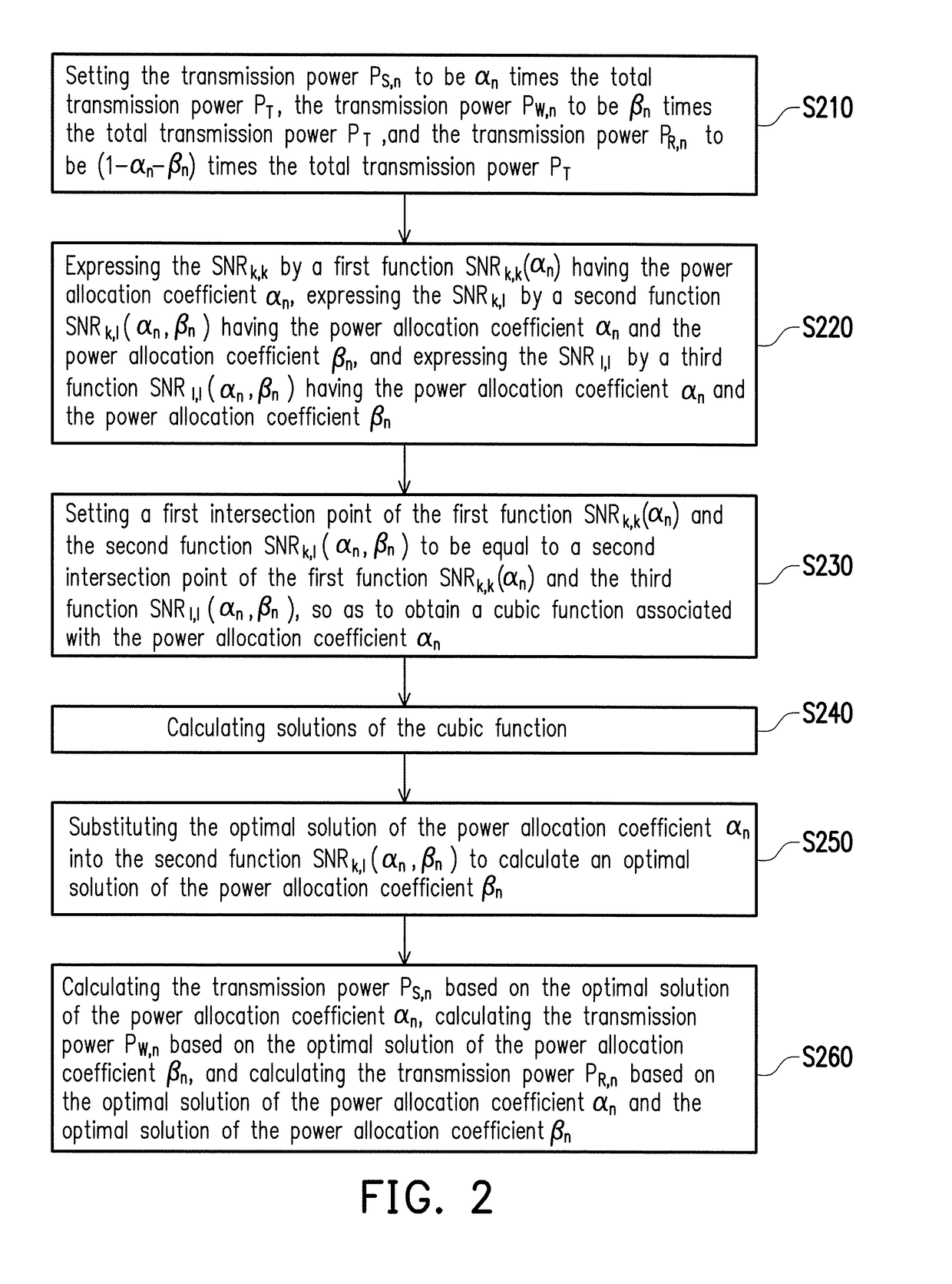Joint user clustering and power allocation method and base station using the same
a user clustering and user technology, applied in the direction of digital transmission, transmission path sub-channel allocation, criteria allocation, etc., can solve the problem that the user clustering algorithm has not been investigated exclusively for the ues, and achieve the effect of reducing the complexity of user clustering, and fast method of searching
- Summary
- Abstract
- Description
- Claims
- Application Information
AI Technical Summary
Benefits of technology
Problems solved by technology
Method used
Image
Examples
Embodiment Construction
[0028]Reference will now be made in detail to the present preferred embodiments of the invention, examples of which are illustrated in the accompanying drawings. Wherever possible, the same reference numbers are used in the drawings and the description to refer to the same or like parts.
[0029]FIG. 1 is a schematic diagram illustrating a downlink cooperative NOMA system according to an embodiment of the invention. In the embodiments of the invention, a downlink cooperative NOMA system 100 includes a base station 110 and K UEs being divided into N clusters (i.e., clusters 120_1, . . . , 120_N and UEs 130_1, 130_2, . . . , 130_K−1 and 130_K). Among them, different clusters are allocated with orthogonal resources, and each cluster includes two UEs sharing the same channel resource. Accordingly, the number K of the UEs in the downlink cooperative NOMA system is an even number greater than or equal to 2 (i.e., K≥2 and K is the even number), and N=K / 2.
[0030]In addition, in practical applic...
PUM
 Login to View More
Login to View More Abstract
Description
Claims
Application Information
 Login to View More
Login to View More - R&D
- Intellectual Property
- Life Sciences
- Materials
- Tech Scout
- Unparalleled Data Quality
- Higher Quality Content
- 60% Fewer Hallucinations
Browse by: Latest US Patents, China's latest patents, Technical Efficacy Thesaurus, Application Domain, Technology Topic, Popular Technical Reports.
© 2025 PatSnap. All rights reserved.Legal|Privacy policy|Modern Slavery Act Transparency Statement|Sitemap|About US| Contact US: help@patsnap.com



